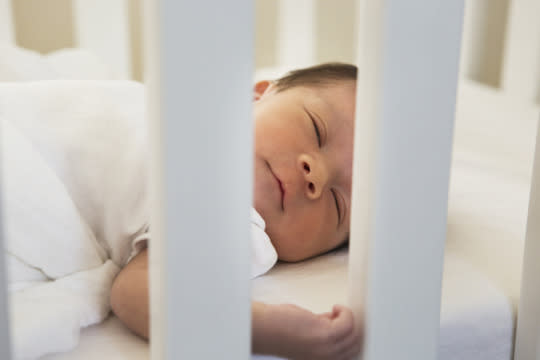Why SIDS Skyrockets on New Year's Day

Although sudden infant death syndrome (SIDS) has gone down significantly over the years — mainly thanks to the American Academy of Pediatrics’ “Back to Sleep” campaign launched in 1992, encouraging parents to put babies to sleep on their backs — SIDS is still the leading cause of death in infants under 12 months old in the U.S. About 1,500 infants died from SIDS in 2013, according to the Centers for Disease Control and Prevention.
But that’s not the only sobering statistic. Research shows there’s one particular day of the year in which the risk of SIDS goes up dramatically: New Year’s Day.
STORY: Does One Doctor Have the Cure for SIDS?
A 2010 study, in which researchers examined 129,090 SIDS cases from 1973 to 2006, found that the number of babies who die of SIDS skyrockets by 33 percent on Jan. 1. The suspected reason? Alcohol consumption by parents and caretakers on New Year’s Eve.
The study also showed that both alcohol consumption and SIDS risk are higher on weekends. In addition, the researchers found that infants of mothers who drink are more than twice as likely to die of SIDS, according to Science Daily.
Although more research is needed on a cause-and-effect link between alcohol and SIDS, the study authors concluded that alcohol “impairs parental capacity,” according to ABC News. For example, it may be more likely that an intoxicated parent would put a baby back to bed on his stomach, which increases the risk of SIDS, rather than his back, according to Nanci Yuan, MD, medical director of the Pediatric Sleep Center at Lucile Packard Children’s Hospital Stanford.
“The alcohol would make [the adults] less careful,” David P. Phillips, lead author of the study and professor of sociology at the University of California at San Diego, told Medscape Medical News. “So if you’re filled up with alcohol, you’re a less competent caretaker, and presumably you might then be more likely to put the child down incorrectly.”
Phillips added: “In addition, if you’re filled up with alcohol and you’re sleeping in the bed with the child, which some parents do, you may be less aware that you’ve rolled over onto the child, or, if the child is uttering some sounds of distress and you’re not compos mentis [mentally aware], you may be less sensitive to these cries for help from the child. All of those things would plausibly connect being a SIDS child with a caretaker who is under the influence of alcohol.”
STORY: We Lost Our Infant Son to SIDS
Although SIDS typically occurs without any clear-cut cause, some experts and organizations, including the Eunice Kennedy Shriver National Institute of Child Health and Human Development (NICHD), believe that three factors have to align for the syndrome to strike: a baby’s age, with 2 to 4 months old being the highest risk period for SIDS; an unknown genetic defect, such as an abnormality in the part of an infant’s brain that controls breathing and arousal from sleep; and a stressor in the baby’s environment, such as being placed to sleep on the stomach instead of the back, overheating during sleep, or exposure to cigarette smoke. “Smoking might affect cilia — the lining in the airways — making it harder for babies to breathe,” Yuan tells Yahoo Parenting. “It may depress their breathing.”
Parents can’t control the first two factors, but they do have control over external stressors in an infant’s environment.
Along with cutting back on alcohol intake, there are several things parents can do to help reduce the risk of SIDS. First and foremost, always put your baby to sleep on his back at naps and at night — not on his stomach or side. Babies should sleep on a firm mattress in a crib without bumpers, blankets, or toys. “The bed should have a mattress, a fitted sheet, and nothing else,” says Yuan.
STORY: Is Swaddling Your Baby Safe? The Great Debate
The American Academy of Pediatrics also recommends sharing a room, rather than a bed, with your baby, noting that infants can be fed and comforted in the parent’s bed, if desired, but then babies should be put in their own crib before the parent falls asleep.
Research shows that reducing these external stressors can make a big difference. A new study found that, along with putting babies to sleep on their backs, the other reason SIDS rates have gone down is that the rates of maternal smoking during pregnancy have also fallen, while breastfeeding rates have gone up — both factors that are protective against SIDS.
(Photo: Getty Images)
Please follow @YahooParenting on Facebook, Twitter, Instagram, and Pinterest. Have an interesting story to share about your family? Email us at YParenting (at) Yahoo.com.

